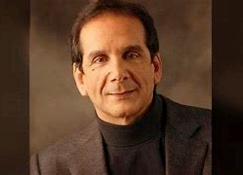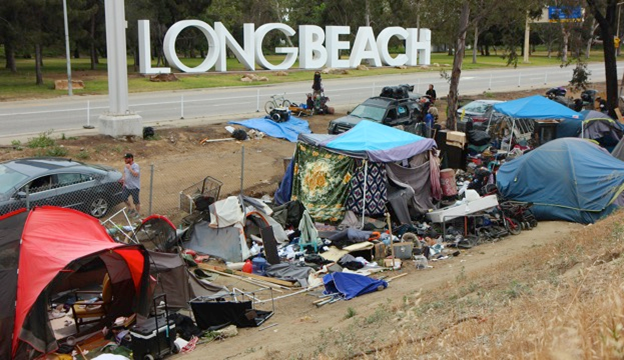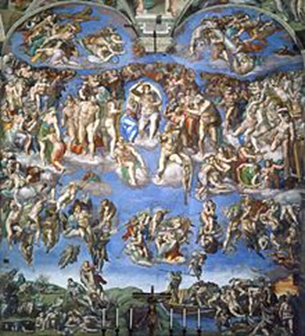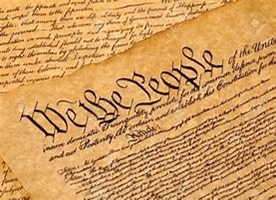
“A Piece of My Mind”
June 2023 Newsletter
Advancing Christian Faith and Values,
Defending Religious Liberty for All,
Supporting Civility and the Common Good
through Preaching, Teaching, Writing,
Activism and Reasoned Conversations

Charles Krauthammer (1950 – June, 2018)
 “I believe that the pursuit of truth and right ideas through honest debate and rigorous argument is a noble undertaking.”
“I believe that the pursuit of truth and right ideas through honest debate and rigorous argument is a noble undertaking.”
A word needed on all college/university campuses! Charles Krauthammer died five years ago, shortly after writing the above. His wise and perceptive commentaries about politics, American life and so much more are needed today more than ever. What would he be saying about the state of politics in America over the past five years? How helpful he would be! Recommended: Krauthammer’s final book, The Point of It All (2018)
 Not Exactly Your “Chamber of Commerce” Welcome to Our Community!
Not Exactly Your “Chamber of Commerce” Welcome to Our Community!
We recently had some property titles recorded in California. The fee was fair enough. But a $75 “SB2” fee was added to each, effectively quadrupling the cost. What is “SB2”? It’s a law passed in California in 2017 to “increase the supply of affordable housing” in California.
It’s hard to see any tangible results. There may be some somewhere, while “tangible non-results” are observable all over the place. This fee becomes just another cost joining other massive costs and expenditures to provide for the homeless, the results being often hard to notice or counter-productive.
Take for example Senate Bill 1380, enacted in 2016. It requires all housing programs using public funds to practice the “housing first” model. What’s that? No one is required to be clean and sober or to participate in programs or services of any kind as a condition to receiving housing.
Many housed under SB 1380 have poor skills in taking care of what they use which isn’t theirs. Those with substance abuse or similar issues will damage buildings and inflict chaos on other residents. Security is weak, primarily because irresponsible residents let others in, say, for drug use or prostitution.
[SB 1380] assumes that four walls and a ceiling will have a miraculous ability to cure the problems that caused that person to be on the street in the first place. In reality, the law enables addicts to inflict harm on themselves and others, at taxpayer expense…
We need housing for residents who won’t destroy it, quality mental health hospitals and residential rehab facilities for people who need care, shelters for people in crisis and the return of the city streets and sidewalks to their intended purpose…
Instead, California is spending $20 billion and counting on the same failed policies, as homelessness experts and non-profit executives draw lavish salaries and big contracts, all funded by taxpayers, to continue the policies that are destroying what once were livable cities.
– Susan Shelley, “Skid Row and the Failure of the ‘housing first’ approach”, Press Telegram, April 13, 2023
We see encampments along rivers, under bridges, beside bike trails, and on sidewalks. We encounter homeless people who may be passive or aggressive walking the streets, hungry or seeking a drink or a fix. We see litter and filth and drug abuse paraphernalia. An expensive and potentially excellent “Metro” rail system is overtaken by homeless people, leading to its abandonment by commuters and others and a big drop-off in revenue. We tax and spend and wonder why the homeless population keeps growing where the climate is so nice. Some experts say the problem is insoluble.
The Bible reminds us (1) these are valuable humans made in the image of God, and (2) we are prone to do evil and harm to ourselves and others, especially absent inculcation of values and meaningful socialization. The Bible instructs us to help the needy with generosity and wisdom, not gullibility and naiveté.
Appropriate non-profit agencies work hard to accomplish what they can with the resources they have. Government leaders are entrusted by citizens with the duty to resolve the issues as much as humanly possible and they always owe the taxpayers careful administration of funds and accountability. Both non-profits and government at all levels must strive to succeed through an effective and efficient use of resources.
Cynicism is understandable but not an excuse to do nothing.
“The Lord’s Prayer” Petition 4 –
Praying for Our “Daily Bread”
[I had wanted to use a recent “Dennis the Menace” cartoon here. Dennis comes out of church and asks the minister if the “daily bread” mentioned in the sermon included jelly and peanut butter! Alas, I thought the $100 royalty a bit too steep.]
“Give us this day our daily bread.”
– Jesus (Matthew 6:11 KJV)


Chef Bruno Serato of the Anaheim White House*, one of the ten best restaurants in Orange County, CA, feeds 5,000 needy children daily.
(*My wife, family and I will dine at “The Chef’s Table” in June for our “57th”)
I met Chef Serato eleven years ago at Cypress College in Orange County. We were there to record comments for an upcoming celebration. He would be named Cypress College Person of the Year for his daily meals for children. He also was nominated for national recognition on CNN. In spite of his busy daily world, he took time to stand and chat with me in the parking lot.
I think of him when I think of the petition in The Lord’s Prayer, “Give us this day our daily bread.” Notice it is a prayer for “us,” not “me.” It asks God to meet the daily sustenance needs for others as well as ourselves. The Lord’s Prayer is not a “gimme” prayer. Chef Serato’s generosity is one big way God answers that prayer for so many.
When we pray for God to give us “Our Daily Bread” we are…
1) Showing the right priorities for “good praying.”
Having first and properly prayed about God’s honor, will and kingdom we now, secondly, turn our attention to ourselves and our needs. In the Lord’s prayer we pray for (1) our physical needs (for bread), (2) our relational needs (for forgiveness) and (3) our moral needs (for help facing temptations).
2) Confessing God as the source of the food that sustains us.
Psalm 104 is my favorite psalm. I like it because it is a wonderful creation psalm. In it we see that God is the first link of the food chain! Notice:
You cause the grass to grow for the livestock
and plants for man to cultivate,
that he may bring forth food from the earth
and wine to gladden the heart of man,
oil to make his face shine
and bread to strengthen man’s heart. (Psalm 104:14-15 ESV)
3) Committing ourselves to pray for and minister to the needs of others, not just ourselves.
“Give US this day OUR daily bread.” God said through Isaiah the prophet,
“Is not this the kind of fasting I have chosen…to share your food with the hungry?” (Isaiah 58:6-7)
God calls us to be compassionate and eager to share with those in need. We should not be gullible, but we should be generous.
4) Learning to live one day at a time and to do God’s will.
“Do not be anxious, saying, ‘What shall we eat?’ or ‘What shall we drink?’ or ‘What shall we wear?’ …Your heavenly Father knows that you need them all. But seek first the kingdom of God and his righteousness, and all these things will be added to you. Therefore do not be anxious about tomorrow…” – Jesus (Matthew 6:32-34)
God met the nourishment needs of the Israelites as they wandered in the wilderness by giving them daily “manna” from heaven. But the people had to put out the effort to gather it and prepare it. No effort, no dinner! And on the Sabbath day no “manna” came from heaven. They must gather enough for two days the day before. They must rest on the Sabbath. See Exodus 16.
We need to learn the lesson of a weekly day of rest. Do we really believe God can supply our needs when we lay aside the rushing demands of the other six days and give God our worship and ourselves a break one day each week?
5) Praying for and thanking God for all steps in the process of putting bread on our tables.
• The workers, often migrants, who do the difficult work in the fields and orchards from which much of our daily provisions comes.
• Good government, that protects the distribution process and ensures fairness for all concerned, and that sets forth economic policies that encourage productivity and keep prices reasonable.
• Thriving wholesale and retail markets that earn profits and provide income while allowing us to afford and purchase what we need.
Along the lines of my points, I recommend reading Martin Luther’s words on this petition (and the whole prayer) as found in his Second Catechism.
6) Remembering also Jesus’ word that, while we live by bread, we do not live by bread alone!
We also live by “every word that proceeds from the mouth of God” (Matthew 4:4). The teachings of Scripture, especially the words of Jesus, feed our spirits and guide us, just as much as the bread God supplies feeds our bodies and sustains us.
Whenever you pray this petition, trust God and thank God for supplying our physical necessities. Pray he will open up opportunities for you to share your abundance with others in need.
Then thank God for his Word, which turns our minds toward our spiritual necessities without ignoring our bodily needs, and teaches us how God supplies both of them through Jesus Christ our Lord.
Bible Insight – The Rapture of the Church
Definitions, a Disclosure & Observation,
Arguments & Affirmations
By Donald Shoemaker (May, 2023)
Definitions:
“Rapture” – “Rapture” is taken from a word in the Latin Bible describing the “catching away” of the Church (followers of Jesus living or raised from the dead at the time of Jesus’ second coming). See 1 Thessalonians 4:16-17.
“The Great Tribulation” – a time (variously understood as 3½ or 7 years) of the presence of the Antichrist who engages in unprecedented persecution and martyrdom of the followers of Jesus. It is also the time of God’s increasing judgments against evil. It concludes with the return of Jesus and his defeat of the Antichrist. See chapters 6-19 in The Book of Revelation.
“Pretribulation Rapture” – God will remove the Church from the world before the Great Tribulation begins. Those who become followers of Jesus after this rapture will be persecuted by the Antichrist.
“Posttribulation Rapture” – the Church will be on earth throughout the Great Tribulation and will experience severe persecution at the hand of the Antichrist. God will rapture the Church at the end of the Great Tribulation so it may be united with Jesus at the time of his glorious return.
There are other minor views about the nature and timing of the Rapture which are not within the scope of this study.
Disclosure:
Years of reflection plus recent in-depth study on the subject of the Rapture of the Church as it relates to the Second Coming of Christ have led me to conclude that the Rapture is an aspect of the singular comprehensive event we call “the Second Coming.” In other words, I no longer hold to a separate “Pretribulation Rapture of the Church,” as I did for many years.
Observation: The Rapture issue is not “a hill to die on.”
I know of no scholar who defended the pretribulation rapture of the Church more strongly than John F. Walvoord, past president of Dallas Theological Seminary. Still, he recognized (correctly so, in my opinion) that no position on the Rapture is decisively taught in Scripture. “The conclusions reached necessarily are based on the total weight of the supporting evidence and the extent to which each solves its problems” (The Blessed Hope and The Tribulation, p. 144).
This being the case, we shouldn’t break fellowship with others over the various viewpoints on the Rapture and how they relate to Jesus’ Return in Glory or cement this or that view into our doctrinal statements.
Argument: At the Rapture, Jesus comes in the air for the saints. At the Revelation, Jesus comes to the earth with the saints.
But are these really two different events? Both may be aspects of the same overall event. Believers will be raptured “to meet” the Lord in the air. Then what? Go to heaven with Jesus or down to earth with Jesus? 1 Thessalonians 4:17, the relevant text, doesn’t say whether Jesus will turn around or the saints will turn around. We can’t dogmatize when the text doesn’t speak.
It is possible that the rapture motif reflects how a representative group would go forth to meet a dignitary and then escort him back to their city. The same verbal form “to meet” is used in Acts 28:15. When Paul arrived in Italy, some believers came out from Rome “to meet” him and then escort him to Rome. Consider also the parable of the Ten Virgins (Matthew 25:1-13). “At midnight the cry rang out, ‘Here’s the bridegroom! Come out to meet him!’” (25:6 NIV)
Argument: At the Rapture before the Tribulation, Jesus will come “like a thief in the night” (sometimes called a “secret” coming). In contrast, at the Revelation at the end of the Tribulation, Jesus will come openly and visibly in power and glory.
This distinction misunderstands the “thief” metaphor. The point is not the element of secrecy but the element of surprise. Devotees of Jesus (“children of the day”) will not be surprised when he returns, for they are prepared. Those who are “in darkness” will be surprised, for they are not prepared.
“But you, brothers and sisters, are not in darkness so that this day should surprise you like a thief.” – 1 Thessalonians 5:4 NIV (read verses 1-11)
If the return of Jesus is “like a thief” to me, that’s my fault!
Argument: The Rapture could happen at any moment, without signs and without warning. The Second Coming, by contrast, is preceded by many signs.
Matthew 24:42 is one scripture used to support this notion of a rapture that comes without signs or warnings. Jesus said, “Keep watch, because you do not know on what day your Lord will come.” Jesus also told the parable of the Ten Virgins (Matthew 25:1-13). Five were unprepared and missed out on the wedding banquet, but the five who were prepared were admitted to the banquet. Jesus concluded, “Therefore keep watch, because you do not know the day or the hour.”
However the reality is that such calls for watchfulness are, in context, intended to prepare people for the posttribulation Second Coming, not a rapture seven years earlier (“At that time the sign of the Son of Man will appear in the sky, and all the nations of the earth will mourn. They will see the Son of Man coming on the clouds of the sky, with power and great glory”
– Matthew 24:30). Indeed, Jesus alerts his followers to look for signs of this “imminent” event and to be prepared, because its exact timing is unknown.
Argument: The Antichrist will not appear until the “Restrainer” is removed (2 Thessalonians 2:5-8). This “Restrainer” is either the Holy Spirit who indwells the Church or the Church itself. Either way, the Church must be removed before the Antichrist can be revealed.
The Apostle Paul’s letter doesn’t tell us who this restrainer is. Paul did tell the Christians in Thessalonica during a prior visit. We have to be content with this lack of information and not try to interpret words that aren’t there. We can have our opinions, but hold them lightly. There is no basis for either speculation or dogmatism on this point.
The key point taught here is the future is in God’s hands. The Antichrist is revealed “at the proper time” when the restraint holding him back is lifted. Not one minute sooner. And he won’t last long. But in between, look out!
Argument: The second coming of Jesus is called “The Blessed Hope” (Titus 2:13). But it’s hardly a “blessed hope” if people know they must first go through the Great Tribulation before Jesus returns.
Christians who have gone through severe persecutions would never think this way. Knowing deliverance will surely happen is a “blessed hope” indeed. Certainly, the exiled Jews were encouraged in the midst of their travail by “the blessed hope,” if you please, of returning to their land (Jeremiah 29:10-14).
Additionally, it’s important to see that our “Blessed Hope” of Jesus’ return is described in Titus 2:13 as the “appearing [epipháneian] of the glory of our great God and Savior, Jesus Christ.” These words describe Jesus’ “epiphany,” his posttribulation Revelation in glory, not some rapture years earlier.
Affirmation: The only text in the Bible that explicitly mentions Jesus’ second coming refers to his Return in Glory.
“Christ was sacrificed once to take away the sins of many; and he will appear a second time, not to bear sin, but to bring salvation to those who are waiting for him.” – Hebrews 9:28
This “second” coming which brings “salvation to those who are waiting for him” would have to be a reference to the pretribulation rapture if that view were correct. Yet, as reflected in many teachings and doctrinal statements and, I believe, in the New Testament too, the true “second” coming of Jesus is his revelation in glory accompanied by his mighty angels (Mark 8:38 and many other scriptures), not Jesus’ appearance at an earlier “rapture event.” Consider Hebrews 10:27 and 12:26 and the next affirmation.
Affirmation: The Revelation of Jesus in glory, not a rapture seven years earlier, will bring his Church relief from persecution.
“He will pay back trouble to those who trouble you and give relief to you who are troubled, and to us as well. This will happen when the Lord Jesus is revealed from heaven in blazing fire with his powerful angels.” – 2 Thessalonians 1:6-7
If there were a rapture prior to the Great Tribulation, this event would surely bring an end to the persecution and affliction of the Church. But if this will be so, why doesn’t Paul mention it? Instead, he clearly regards Jesus’ Revelation [apokalúpsis – “apocalypse”] “in blazing fire with his powerful angels” as the event that will bring the Church relief from those who are troubling it.
’Mid toil and tribulation,
And tumult of her war,
She waits the consummation
Of peace for evermore;
Till, with the vision glorious,
Her longing eyes are blest,
And the great Church victorious
Shall be the Church at rest.
– “The Church’s One Foundation” by Samuel Sebastian Wesley (1864)
Affirmation: I believe this about Jesus –
For our sake he was crucified under Pontius Pilate,
he suffered death and was buried,
and rose again on the third day…
He ascended into heaven
and is seated at the right hand of the Father.
He will come again in glory
to judge the living and the dead
and his kingdom will have no end.
– The Nicene Creed (325 AD)

“Veni, Domine Jesu”
“¡Ven, Señor Jesús!”
“Come, Lord Jesus!”
– Revelation 22:20
Last Judgment fresco (1534-41)
by Michelangelo fills the Sistine Chapel’s
altar wall (resurrection is depicted in the lower left)
Religious Liberty Vigilance –
“Nibble, Nibble, Nibble, Nibble” – How the Federal Government is Eroding Religious Liberty
 “Congress shall make no law respecting an establishment of religion, or prohibiting the free exercise thereof, or abridging the freedom of speech, or of the press; or the right of the people peaceably to assemble, and to petition the Government for a redress of grievances.”
“Congress shall make no law respecting an establishment of religion, or prohibiting the free exercise thereof, or abridging the freedom of speech, or of the press; or the right of the people peaceably to assemble, and to petition the Government for a redress of grievances.”
– 1st Amendment
• Walter Reed National Military Medical Center ended a two-decade long arrangement with a community of Franciscan priests that provided pastoral care services to hospitalized service members. Instead, a secular firm will provide services, but they won’t be comparable. Hospitalized military personnel who are Catholic will no longer have ready access to church sacraments. This new action stands in violation of a tradition of government-supported religious services to those in the military that is almost as old as our nation.
• Rules are being rescinded that allow religious organizations to participate in federally-funded programs without relinquishing their faith commitments.
• The Department of Education seeks to rescind a “Religious Liberty” rule that protects campus organizations from negative actions by administrators who disapprove of their beliefs. Present rules prohibit administrations from discriminating against student groups because of their religious beliefs.
• The definition of “sex discrimination” is being broadened to include sexual identity and speech or conduct subjectively felt to be discriminatory. If it is found that the speech or conduct “more likely than not” will give offense, disciplinary action could be taken against a faculty member or student.
• Religiously-based hospitals or doctors with religious convictions may be coerced into providing medical procedures (such as abortion services or gender-transition services) in spite of their deep religious objections to such services.
And the list grows. The current administration is not a friend of the “free exercise of religion” clause in the First Amendment.
Latino Catholic Trends in America
St. Anthony’s Catholic Church in Long Beach is one interesting parish to visit. It is old and ornate yet welcoming. It has six Masses on Sundays—three in Spanish. When you attend a Mass in Spanish you become part of a packed and lively congregation with lots of children present. I don’t understand much of what is said. I have my i-Pad open to the Nicene Creed in Spanish but can’t keep up with the recitation speed. Taco carts are aplenty out front after Mass.
With this memory, I was rather surprised at a report in Catholic World News (April 13) about the drop-off in the number of Latinos in the U.S. who identify as Catholic. In twelve years their number has plummeted from 67% to 43% of the Latino population (down to 30% among Latinos age 18-29). Have many become Protestant? No. That number has ticked up only 3 points to 15%.
Although Catholics still easily outnumber Protestants among Latinos, the Latino Protestants are much more likely to attend weekly worship (53% versus 22%).
Certainly the pandemic has affected church attendance. Still overall, these statistics are another sad sign of the decline of Christian impact in America.
www.donaldshoemakerministries.com
Don has been a member of the clergy in the Long Beach, California area since 1970. He now serves as Pastor Emeritus of Grace Community Church of Seal Beach (where he was senior pastor 1984-2012) and as Senior Chaplain of the Seal Beach Police Department (2001+). He previously was an assistant professor of Biblical Studies at Biola University (1976-84) and chaired the Social Concerns Committee in the Fellowship of Grace Brethren Churches from 1985 to 2019.
His graduate work includes a Master of Divinity from Grace Theological Seminary, a Master of Theology from Fuller Theological Seminary with a concentration in Christian ethics, and a Doctor of Ministry from American Baptist Seminary of the West (now Berkeley School of Theology) with a concentration on the Charismatic Movement. His law school studies included a course on the First Amendment. He and his wife Mary have been married for over 56 years. They have two children and six grandchildren.
© 2023 Donald P. Shoemaker
APPENDIX: Recent Court Decisions and the
Non-Establishment [of Religion] Principle
By Eugene Volokh (April 22, 2023)
Eugene Volokh is the Gary T. Schwartz Distinguished Professor of Law at UCLA.
[BOLD mine—DS]
…Some have suggested that the problem with Dobbs [the 2022 U.S. Supreme Court decision overturning Roe v. Wade] is that it lets states implement one particular, religious understanding of when life begins, or more precisely of when the right to life vests. But of course, any legal system must adopt some rule on this subject. The line could be drawn at conception, at the end of the first trimester, at viability, at the end of the second trimester, at birth, or after birth—ancient Romans, for instance, allowed exposing unwanted children to leave them to die.[1] All these decisions are based on unproven and unprovable views, whether moral, spiritual, or otherwise.
Likewise for animal rights. In my own state of California, it’s a crime to sell horse meat for human consumption.[2] That’s based on a nonrational moral or spiritual judgment: One argument for a similar proposal in Illinois, for instance, described eating horse meat as “morally perverse,” “a perversion of the human-animal bond.”[3] And it’s a judgment that controls what people can put into their own bodies. Yet it’s precisely the sort of judgment that democracies generally leave to the political process. The same is true for many other decisions about which animals the law should protect, and against what forms of treatment.
And of course, many voters’ and legislators’ moral judgments turn on their religious beliefs. Consider the draft, or the decision whether to start a war (or to stop one). Some people oppose all war for religious reasons. Some oppose unjust war for religious reasons.[4] Some support some wars for religious reasons. (“As He died to make men holy, let us die to make men free.”[5])
Most of the coercive laws that we hotly debate involve forcing a majority’s views on the minority. That is true, as noted above, of laws protecting endangered species, antislavery laws, antidiscrimination laws, animal cruelty laws, environmental laws, intellectual property laws—or for that matter, bans on infanticide, child sexual abuse, or more generally, theft, sexual assault, or murder. Some of these laws may be sound on the merits and others unsound. But the fact that they force one group’s views on another doesn’t make them violations of the Establishment Clause, regardless of the source of the first group’s views.
Religious people are as entitled as nonreligious people to implement into law their views about right and wrong, even if those views are matters not of logic or empirical evidence but of fundamentally moral and spiritual (or, to religious people, religious) judgment. And of course, the Supreme Court has repeatedly reaffirmed this, for instance in Harris v. McRae,[6] a case involving bans on abortion funding.[7]
To be sure, Justices shouldn’t decide cases purely based on their theological beliefs, or skew their readings of, say, text or original meaning or tradition based on what their own religious beliefs (or their own secular philosophical beliefs) command. But there’s no Establishment Clause barrier to their returning disputes to the political process, where voters and legislators can make decisions based on their own moral judgment, including religiously informed moral judgment. And of course, if Justices are supposed to evaluate rights questions with an eye towards what they think is the proper standard of human dignity or liberty or equality, then religious Justices must be as free to consider their own religiously informed moral thoughts as much as, say, Kantian or Rawlsian or Dworkinian Justices are free to consider their own philosophically informed moral thoughts.
Naturally, this doesn’t preclude arguments that the Constitution does secure a right to abortion, or a broader individual right to control one’s own body (whether that means a right to get an abortion or a right not to have the body used to kill enemy soldiers), entirely apart from whether restrictions on such rights are motivated by religion. My point is simply that, whenever this question turns on matters of morality, religious people are as entitled as secular people to use their own morality to decide them, even when that morality is religiously infused.
[1]. See, e.g., Judith Evans Grubbs, Infant Exposure and Infanticide, in The Oxford Handbook of Childhood and Education in the Classical World 83, 85 (Judith Evans Grubbs, Tim Parkin & Roslynne Bell eds., 2013). Indeed, ancient Roman law allowed the eldest male in the family to kill any family member, even an adult, though the power may have been more formal than real. See, e.g., Barry Nicholas, An Introduction to Roman Law 65–67 (1975).
[2]. Cal. Penal Code § 598d (West 2022).
[3]. Horse Lovers Tell Illinois Lawmakers: Stop Turning Mr. Ed into Mr. Edible, Ill. Times: Neighsayers (Nov. 6, 2003), https://www.illinoistimes.com/springfield/neighsayers/Content?oid=11436462 [https://perma.cc/8LPF-FUGH].
[4]. See Gillette v. United States, 401 U.S. 437, 441 (1971).
[5]. Julia Ward Howe, The Battle Hymn of the Republic, in The New Oxford Book of War Poetry 140 (Jon Stallworthy ed., 2014).
[6]. 448 U.S. 297, 319 (1980).
[7]. See also Bob Jones Univ. v. United States, 461 U.S. 574, 604 n.30 (1983); McGowan v. Maryland, 366 U.S. 420, 442 (1961).

